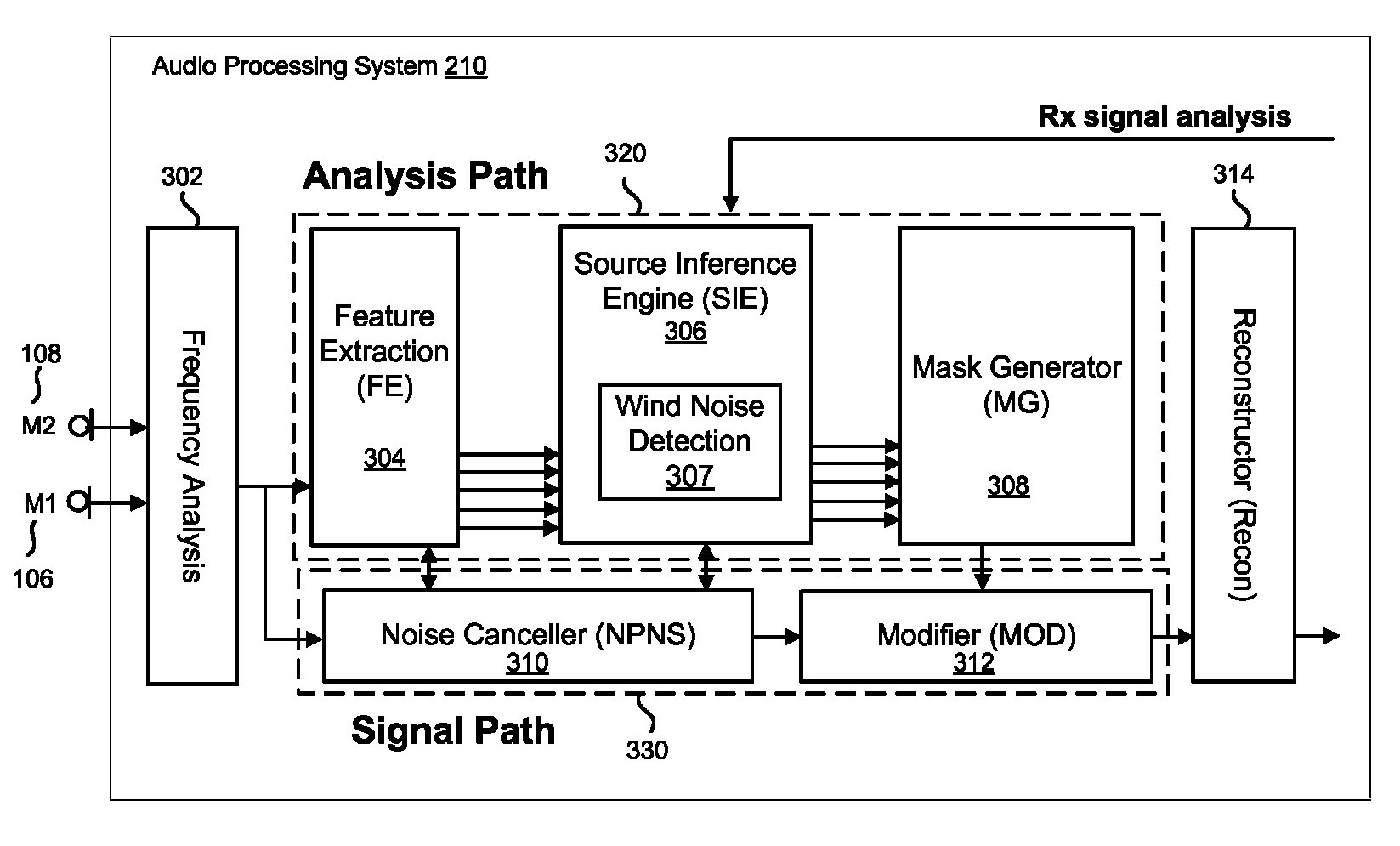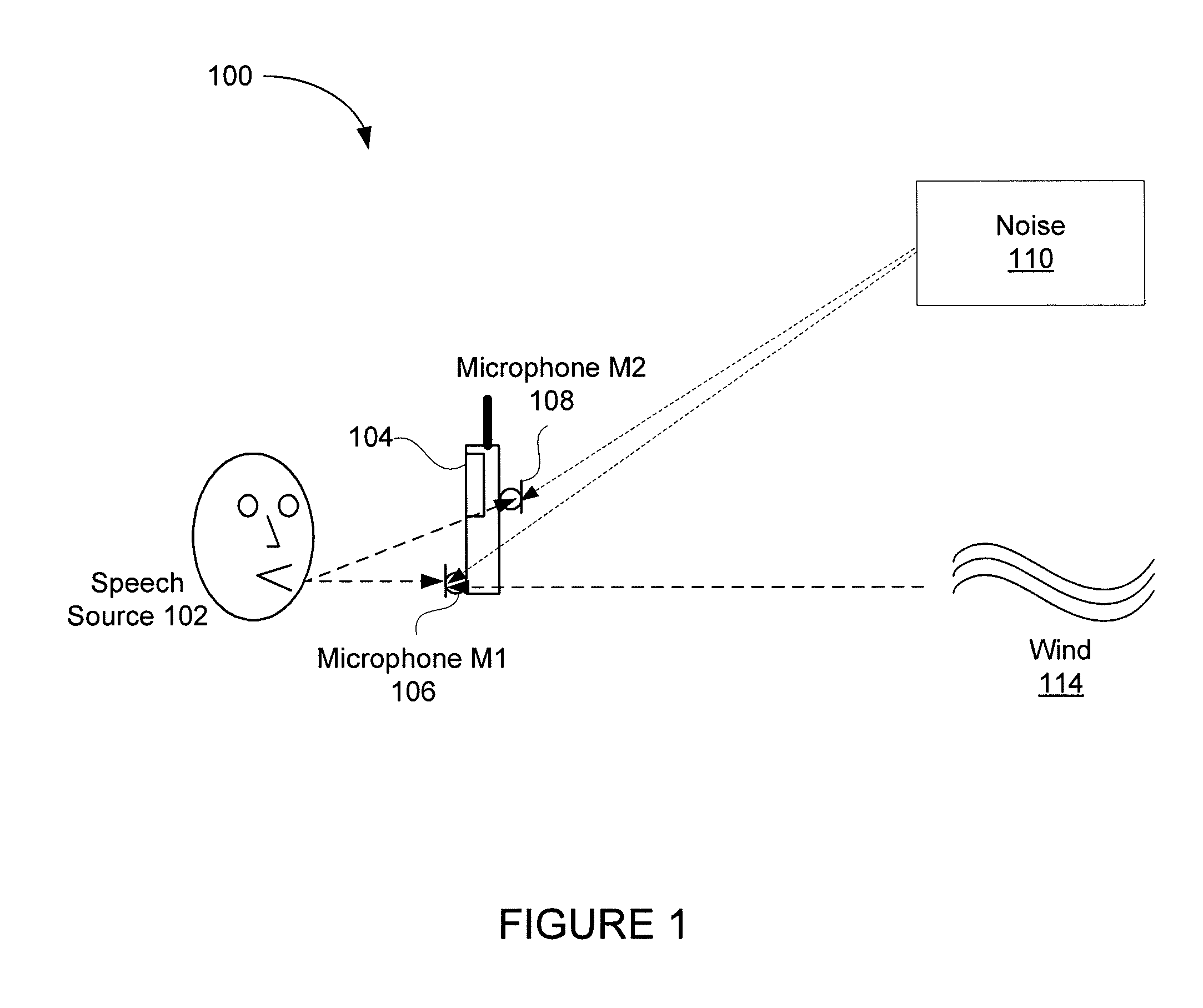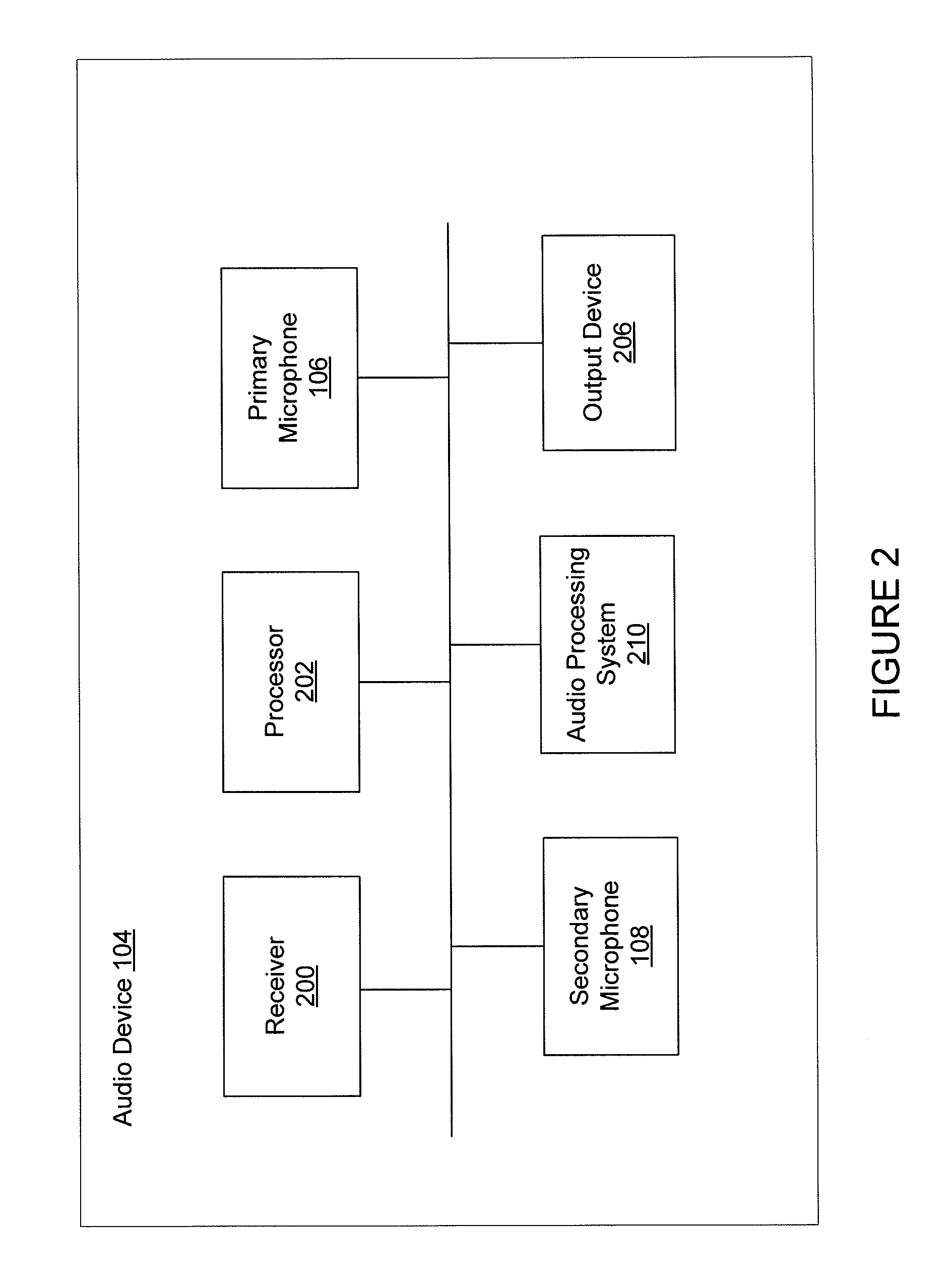Wind noise detection and suppression
a technology of wind noise and detection, applied in the field of audio processing, can solve the problems of affecting the quality of telephones, and affecting the use of telephones, so as to reduce the noise of telephones, detect and remove wind noise, and suppress wind nois
- Summary
- Abstract
- Description
- Claims
- Application Information
AI Technical Summary
Benefits of technology
Problems solved by technology
Method used
Image
Examples
Embodiment Construction
[0020]The present technology detects and removes wind noise in an acoustic signal. Features may be extracted from the acoustic signal. The extracted features may be processed to classify the signal as containing wind noise or not. The wind noise may be removed before processing the acoustic signal further. The wind noise may be suppressed by estimating a wind noise model, deriving a modification, and applying the modification to the acoustic signal. In audio devices with multiple microphones, the channel exhibiting wind noise (i.e., acoustic signal frame associated with the wind noise) may be discarded for the frame in which wind noise is detected.
[0021]The extracted features may be processed by a characterization engine that is trained using wind noise signals and wind noise with speech signals, as well as other signals. The features may include a ratio between energy levels in low frequency bands and a total signal energy, the mean and variance of the energy ratio, and coherence b...
PUM
 Login to View More
Login to View More Abstract
Description
Claims
Application Information
 Login to View More
Login to View More - R&D
- Intellectual Property
- Life Sciences
- Materials
- Tech Scout
- Unparalleled Data Quality
- Higher Quality Content
- 60% Fewer Hallucinations
Browse by: Latest US Patents, China's latest patents, Technical Efficacy Thesaurus, Application Domain, Technology Topic, Popular Technical Reports.
© 2025 PatSnap. All rights reserved.Legal|Privacy policy|Modern Slavery Act Transparency Statement|Sitemap|About US| Contact US: help@patsnap.com



